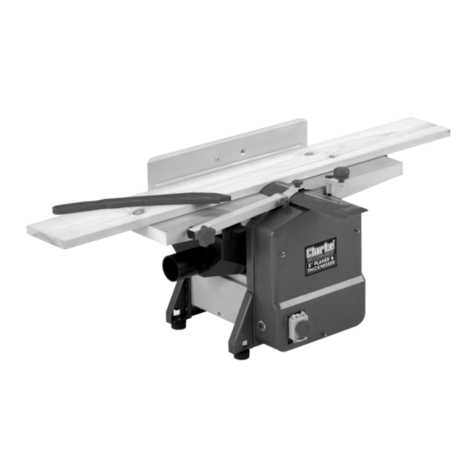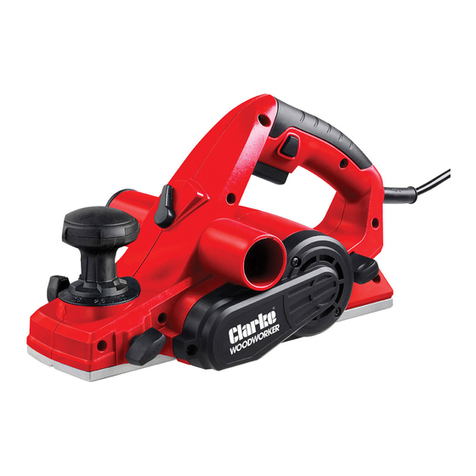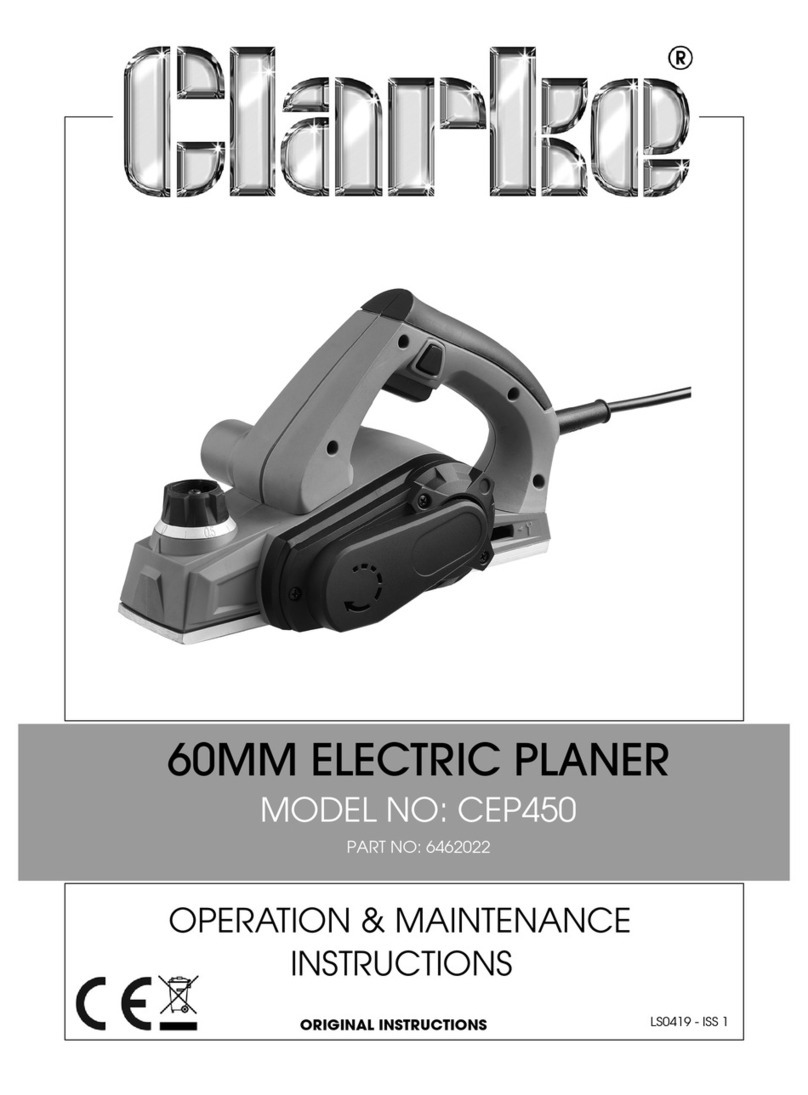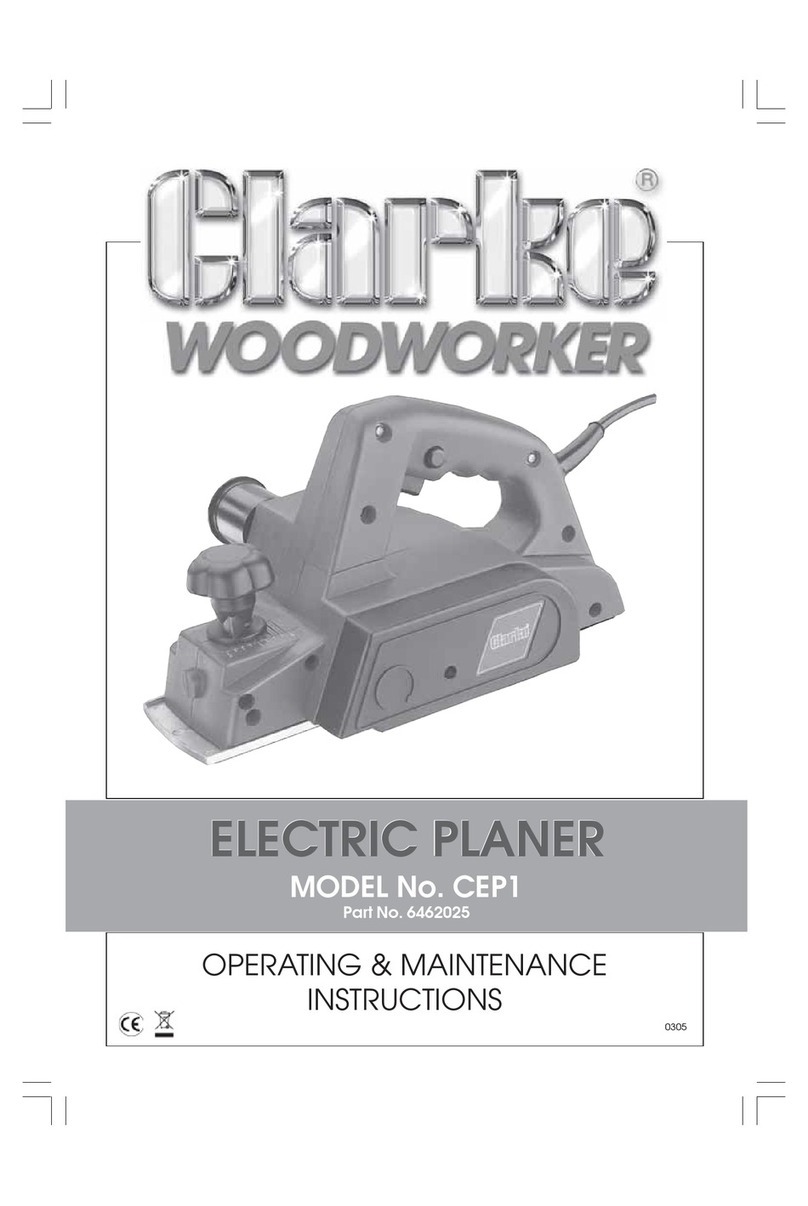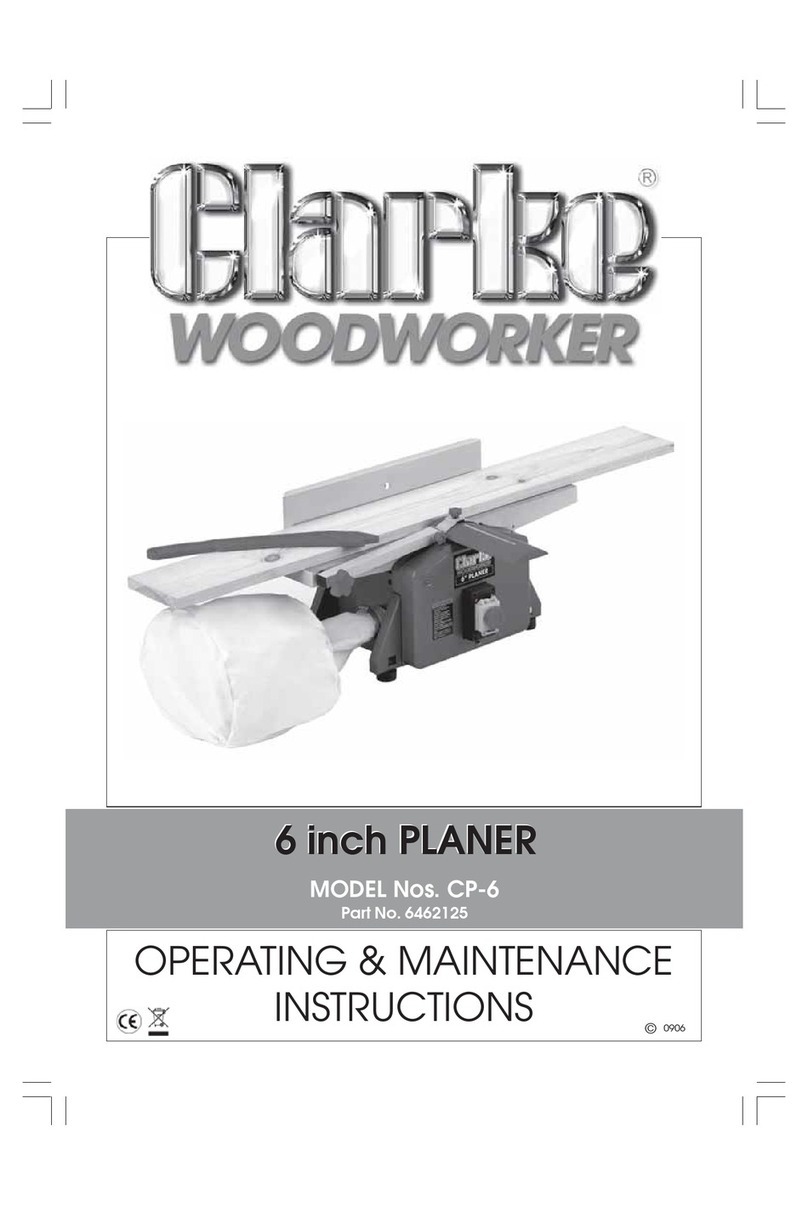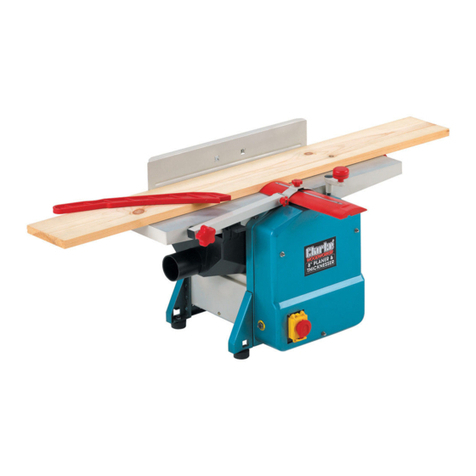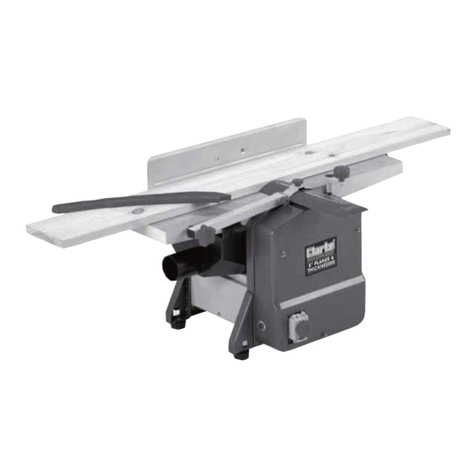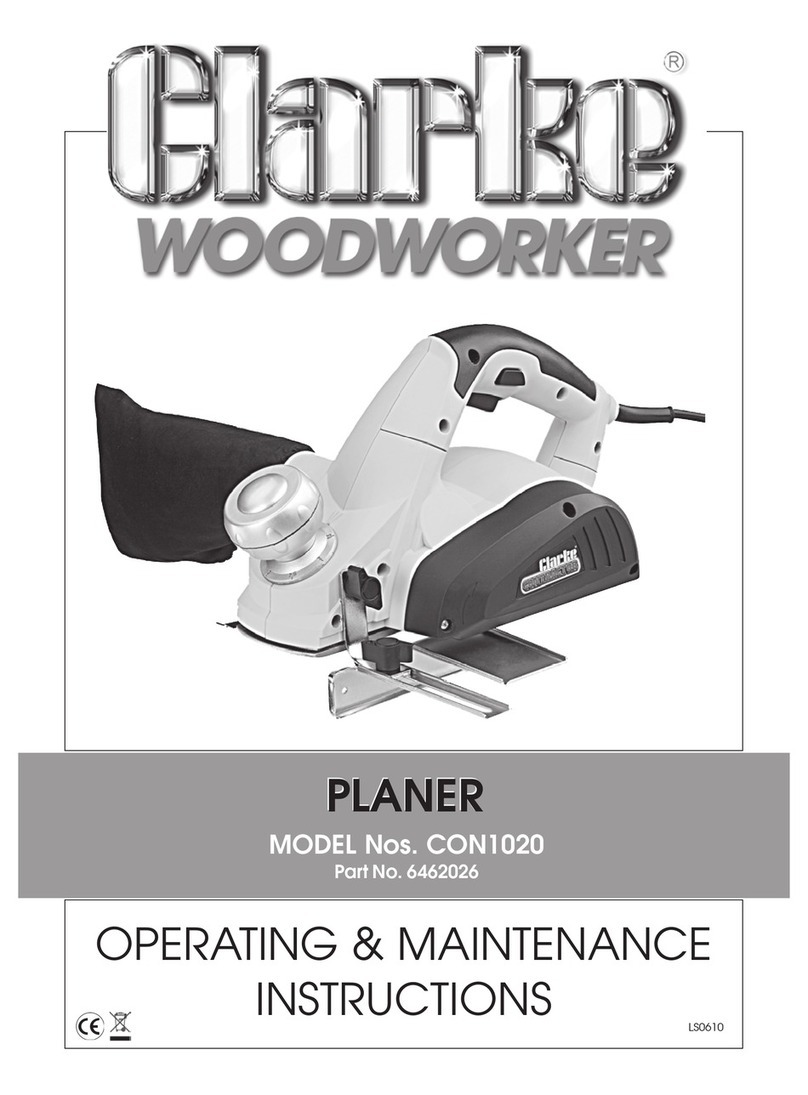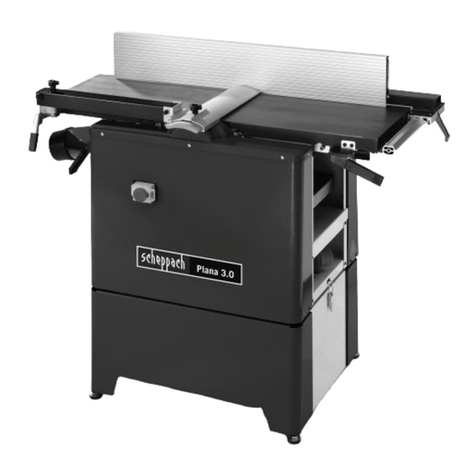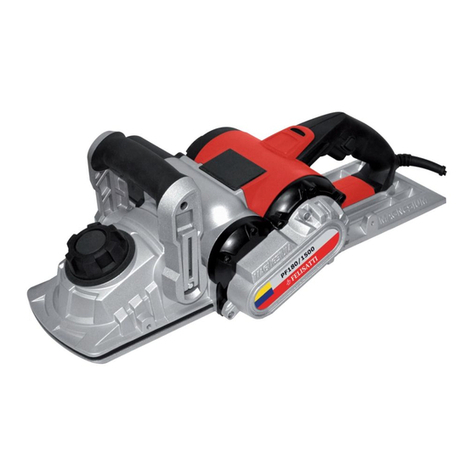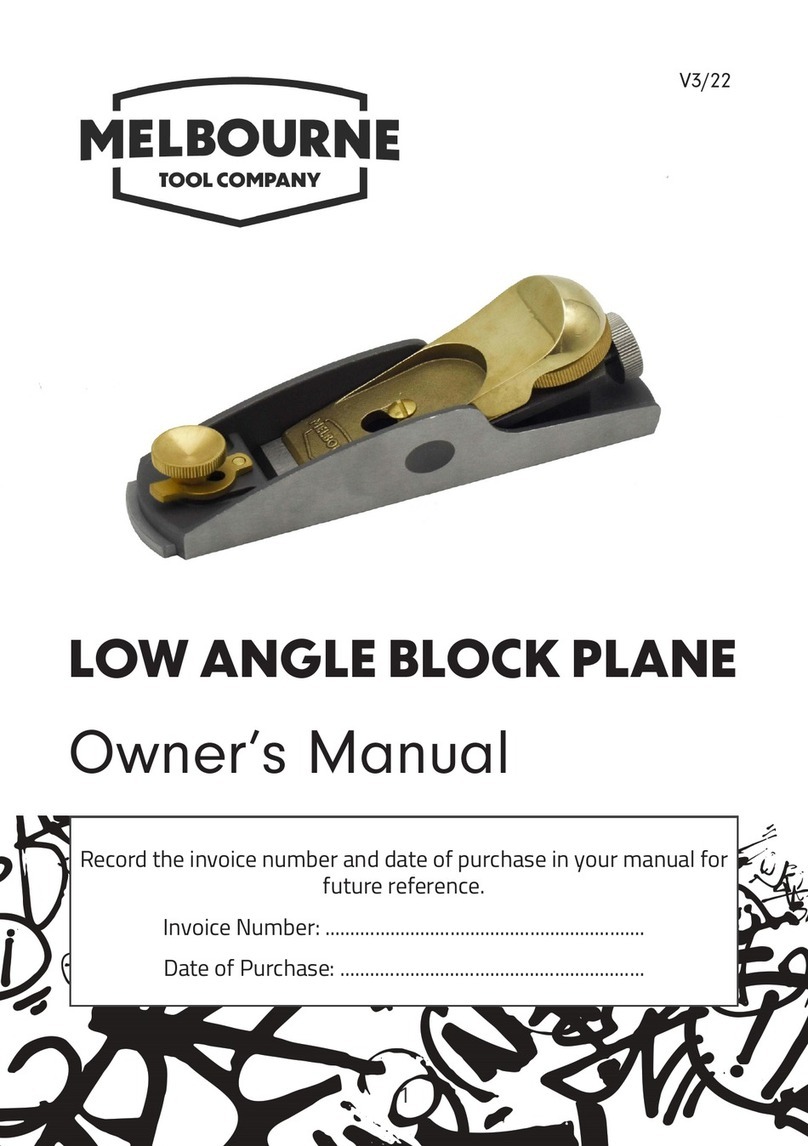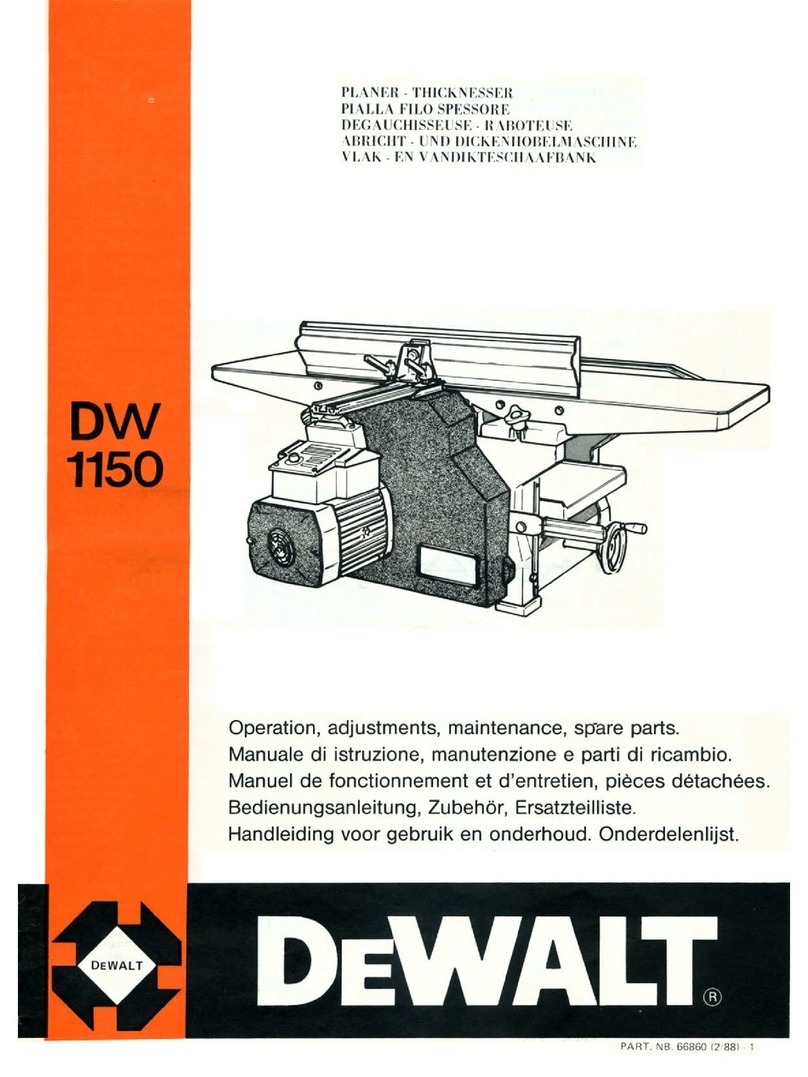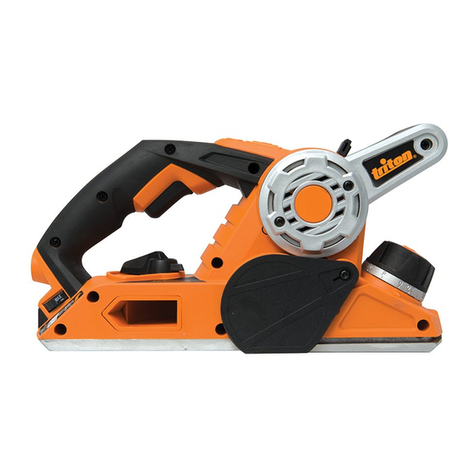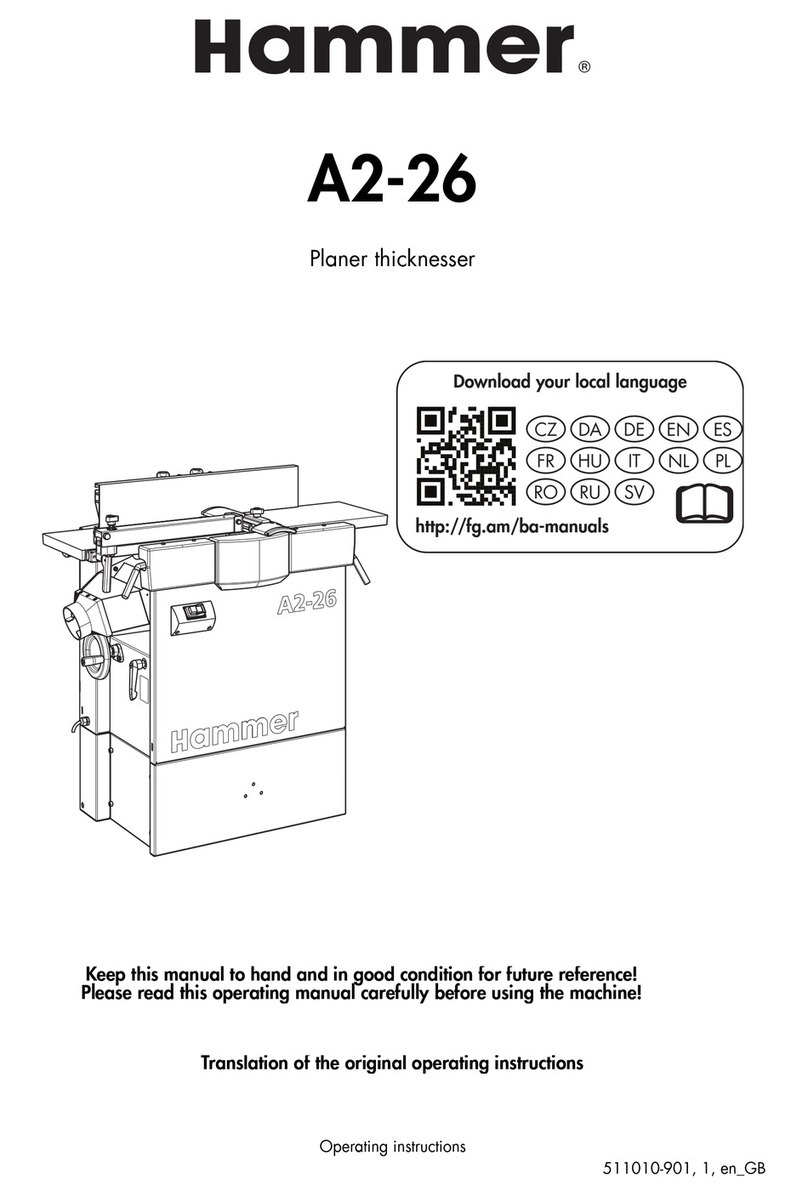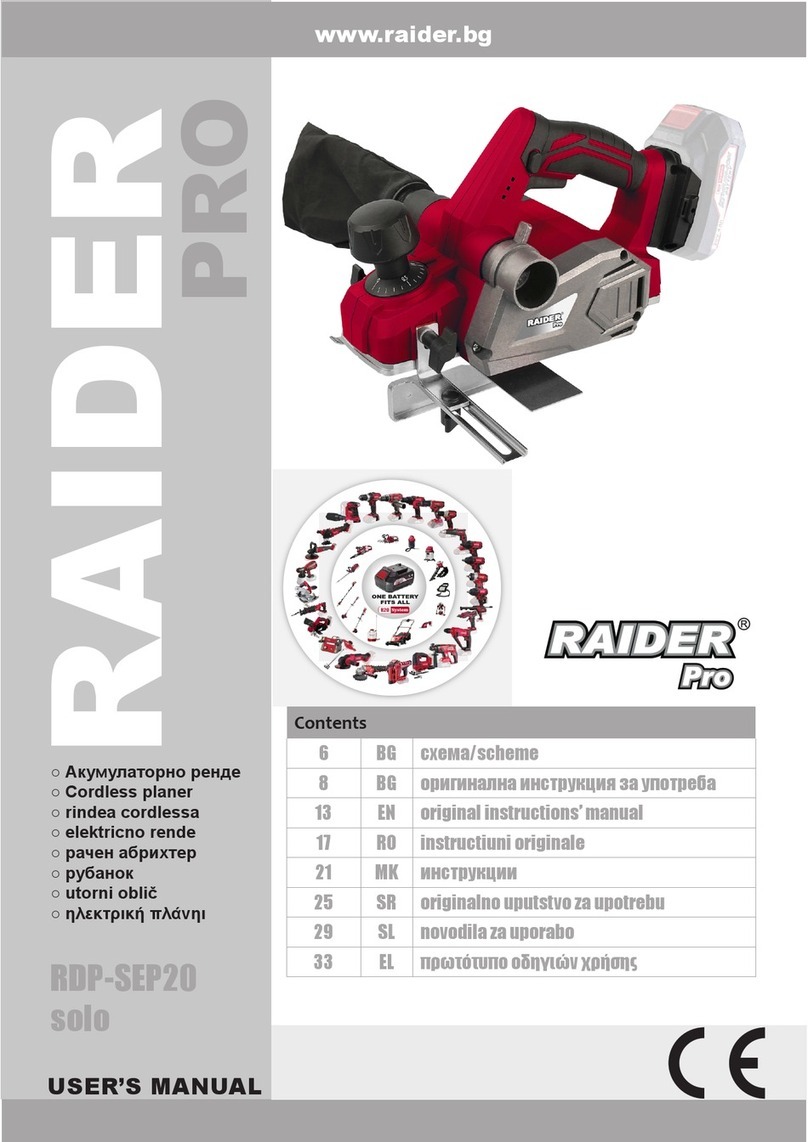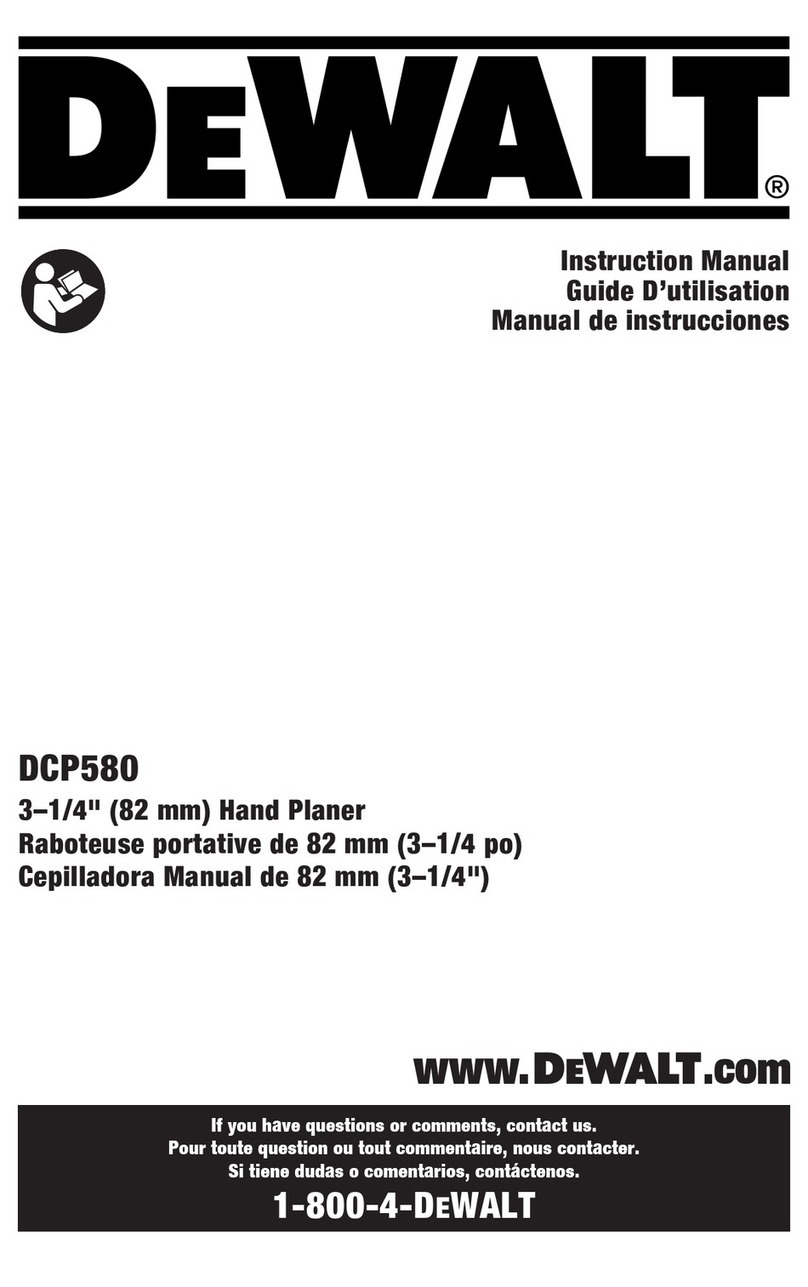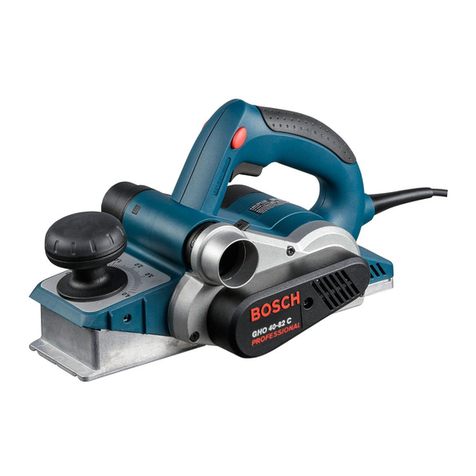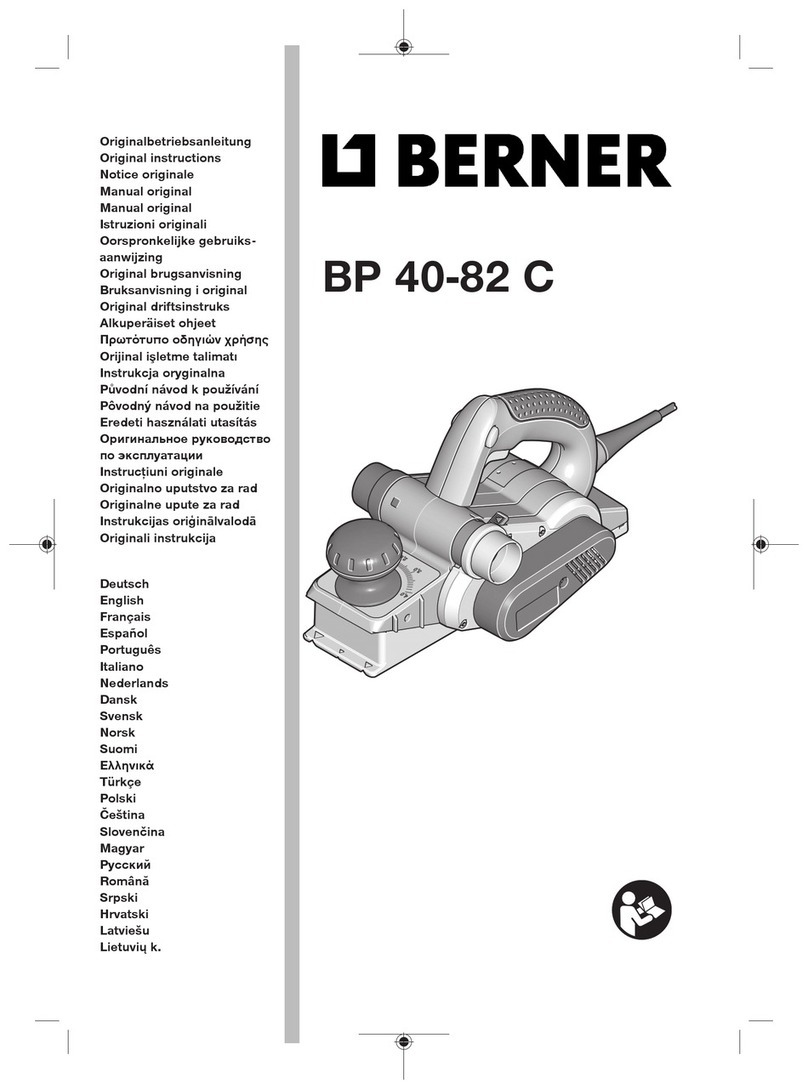5
14. ALWAYS wear proper apparel. Loose clothing or jewellery may
get caught in moving parts. Wear protective hair covering
to contain long hair.
15. ALWAYS use recommended accessories, the use of improper
accessories could be hazardous.
16. ALWAYS remove plug from electrical outlet when adjusting,
changing parts, or working on the machine.
17. NEVER operatemachine whileunder the influenceof drugs,alcoholor anymedication.
18. NEVER leave machine running unattended. turn power off.
Do not leave the machine until it comes to a complete stop.
19. NEVER force the machine, it will do a better and safer job at
the rate for which it was designed.
20. NEVER use power tools in damp or wet locations or expose
them to rain. Keep your work area well illuminated.
21. DO NOT use in explosive atmosphere (around paint,
flammable liquids etc). Avoid dangerous environment.
ADDITIONAL PRECAUTIONS FOR PLANER/THICKNESSERS
1. ALWAYS ensure the cutters are properly secured in the cutter block before use.
2. ALWAYS ensure the cutters are sharp, blunt cutters increase the risk of kick back.
3. ALWAYS switch the machine OFF immediately the task is completed.
4. ALWAYS ensure safety devices etc., are in place and working correctly, if not DO NOT
use the machine until they are.
5. ALWAYS use with a dust extraction device fitted.
6. ALWAYS allow the machine to reach full speed before introducing workpiece.
7. DO NOT use the machine if the electric cable, plug or motor is in poor condition.
8. DO NOT allow the ventilation slots in the machine to become blocked.
9. DO NOT touch the cutter immediately after use, allow time for it to cool.
10. NEVER leave machine running unattended, ALWAYS ensure the machine is switched
off and come to a complete stop before leaving it.
11. NEVER use the machine with any of the guards removed.
12. NEVER attempt to reverse the workpiece towards the infeed.
13. NEVER proceed unless the workpiece has been thoroughly checked to ensure it is
completely free of nails, screws, staples etc.
14. NEVER plane a piece of wood without the Cutter Guard completely covering any
exposed Cutter Blade
15. AVOID accidental starting, by switching off and isolating from the main electrical
supply by removing the plug from the socket.
16. REGULARLY check to ensure the ‘Anti-Kickback pawls operate correctly.
17. IMPORTANT! This machine develops considerable noise when in use. ALWAYS wear Ear
Defenders
Additionally, please keep these instructions in a safe place for future reference.
